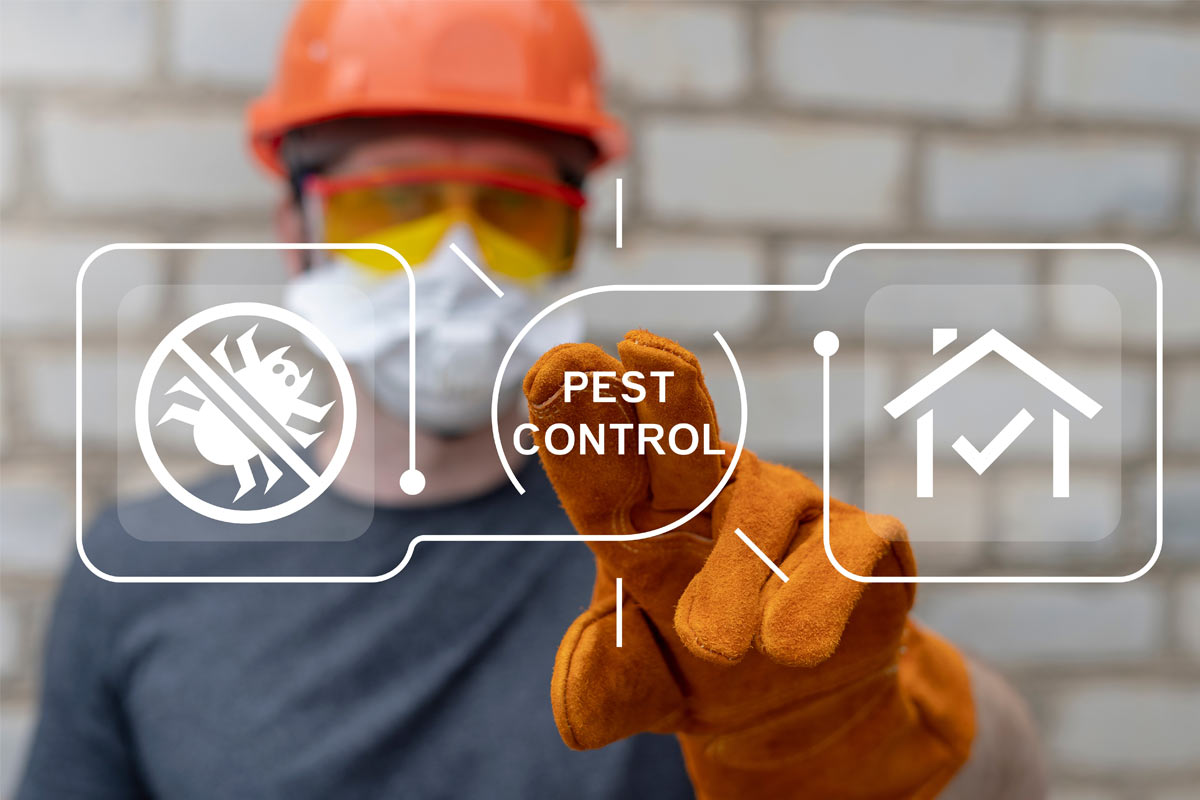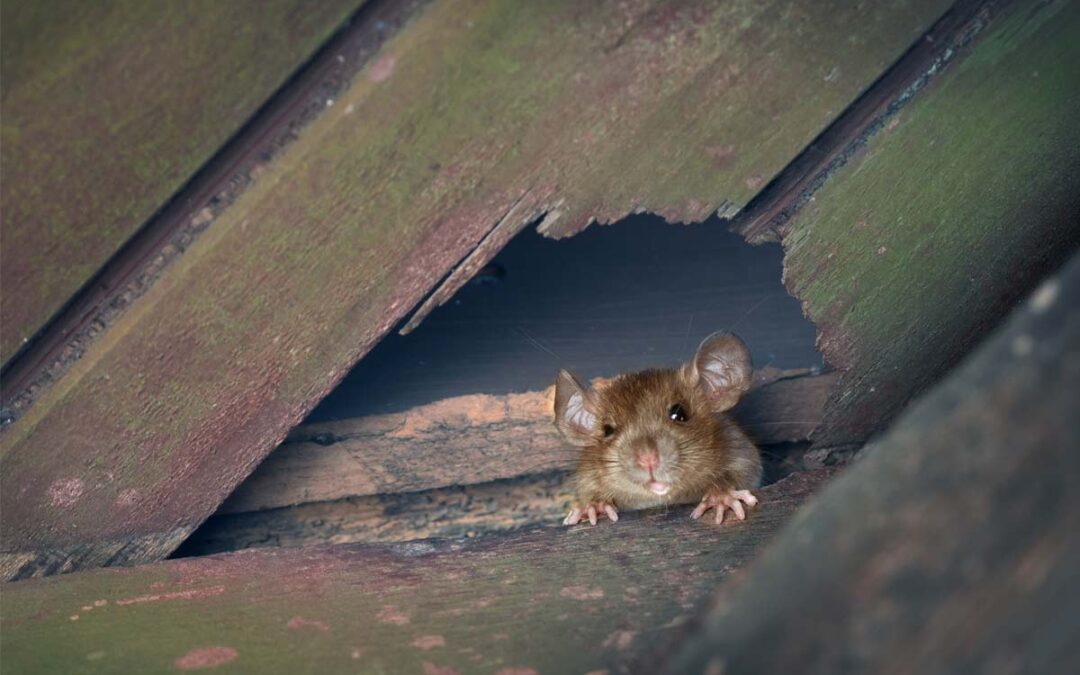Mice are one of Canada’s most common household pests, yet many homeowners still hold outdated or incorrect beliefs about how to deal with them. These pest control myths create a false sense of security and often delay effective treatment. As a result, infestations can grow unnoticed, turning a manageable problem into a serious one.
Mice aren’t just an inconvenience—they carry disease, damage property, and contaminate food. If you rely on misinformation, you’re likely wasting time on solutions that don’t work. Knowing what’s true and what isn’t is the first step toward removing mice from your home for good.
Why Misinformation About Mice Is a Real Problem
Misunderstanding how mice behave or how infestations grow can cause even a well-kept home to suffer long-term damage. Mice reproduce quickly, often unnoticed until they’ve formed a full colony behind your walls or attic. Once that happens, simple DIY solutions no longer work, and the cost of removal and repairs grows.
Misinformation also creates false confidence. People believe they’ve solved the issue when they’ve only temporarily reduced it. Meanwhile, mice nest, chew through wires, and spread droppings. Worse, their presence can lead to health issues like hantavirus, salmonella, and other bacteria that thrive in contaminated areas.
That’s why it’s so important to stop believing in old myths. Every piece of incorrect advice keeps you from focusing on what will stop the infestation. If you’re not tackling the problem from the right angles, you’re not getting rid of it—you’re just making space for it to come back.
Common Mouse Myths That Are Making the Problem Worse

Many households unknowingly allow mice to thrive because they act on bad advice. These myths sound believable, especially when repeated by friends, neighbours, or online forums. But following them can lead to significant setbacks.
- Mice Only Infest Dirty Homes
A common belief is that mice only appear in messy or unclean homes. This myth makes some homeowners feel immune to infestations simply because they vacuum often or wash dishes every night. In reality, cleanliness alone doesn’t stop mice from entering your home.
Three basic needs drive mice: food, water, and shelter. Even the cleanest homes may provide access to all three. Crumbs behind appliances, pet food bowls, and dry food stored in paper packaging are all fair game for mice. Warmth and nesting materials like insulation or cardboard increase the appeal.
- Cheese Is the Best Bait
Movies and cartoons have cemented the idea that cheese is a mouse’s favourite food. While mice will eat cheese if available, it’s far from the most effective bait for traps. Many better options are overlooked because of this persistent myth.
Peanut butter, sunflower seeds, oats, and cooked meat are much more attractive to mice. These foods offer more nutrients and have more pungent smells that lure mice more consistently. Cheese, on the other hand, dries out quickly and becomes less appealing over time. Using the wrong bait means missing out on a better catch rate.
- One Mouse Isn’t a Big Deal
Seeing a single mouse is a minor inconvenience. Some individuals capture the mouse, discard it outdoors, and believe they have resolved the problem. But in most cases, that one mouse is just the beginning—or more accurately, a sign that others are already present.
Mice breed rapidly. A female can produce up to 10 litters per year, with each litter containing 5–12 pups. If food and shelter are available, the population can grow in weeks. That one mouse likely has siblings, a mate, or offspring hidden nearby. Ignoring it can quickly turn into a full-blown infestation.
- Mice Can’t Climb or Jump
People often assume that mice only travel at ground level, which leads them to focus only on floors and baseboards when checking for entry points. In reality, mice are excellent climbers and can even scale vertical surfaces.
They can jump nearly 30 cm vertically and are known to climb wires, pipes, and even brick. Their height allows them to reach cabinets, attics, and wall cavities easily. If you’re only inspecting low areas, you’re likely missing how and where mice enter and travel throughout your home.
- You’ll Hear Mice If They’re There
Many homeowners think a lack of noise means a lack of mice. This assumption leads to delays in action and gives infestations time to grow. The truth is, mice are quiet and nocturnal.
They do most of their activity at night, often nesting in areas you wouldn’t notice. Scratching sounds are sometimes heard, but not always. Their droppings, chew marks, and greasy rub marks near walls are more reliable indicators. Waiting until you hear them usually means the problem is already severe.
- Store-Bought Repellents Are Enough
There are countless sprays, ultrasonic devices, and scented repellents sold in stores that claim to stop mice. Most homeowners are eager to try them because they’re affordable and straightforward. Sadly, these solutions rarely live up to their promises.
Mice can become used to ultrasonic sounds and smells, especially when those deterrents don’t affect their access to food or nesting. Once they adjust, the products lose their effect. Without addressing entry points and food sources, mice will ignore these repellents. Relying on them wastes time and money while mice thrive in your space.
- Once You Set Traps, the Problem Is Solved
While traps are helpful, they’re not a complete solution. Too many homeowners believe that setting out a few traps means the job is done. This can lead to repeated infestations because the root causes are left unaddressed.
Traps catch individual mice, not colonies. They also don’t prevent new mice from entering. Without sealing cracks, storing food properly, and inspecting for nests, new mice will replace the ones you trap. Proper control requires long-term prevention and monitoring.
- Mice Only Enter During Winter
Mice are more visible during colder months because they seek warmth. But the idea that they’re only a winter issue is misleading. Mice invade homes year-round.
In the summer, they may escape the heat or look for dry areas during heavy rain. Spring and fall offer mild temperatures that don’t stop their activity. Believing mice only come in winter makes you less vigilant during other seasons, allowing them to move in unnoticed.
Simple Actions to Prevent a Mouse Infestation
Mice always seek food, warmth, and a safe place to nest. If your home gives them easy access to those things, they’ll move in fast and multiply even faster. To keep them out, you need to block entry points and remove anything that might attract them.
- Seal All Entry Points
Use steel wool or metal mesh to close gaps around doors, pipes, vents, and windows. Mice can squeeze through openings as small as a dime.
- Store Food in Sealed Containers
Keep dry goods, pet food, and snacks in glass or plastic containers with tight-fitting lids. Avoid leaving food out overnight.
- Clean Regularly and Remove Crumbs
Wipe down counters, sweep floors, and vacuum behind appliances where food particles can collect unnoticed.
- Fix Leaks and Eliminate Moisture
Mice need water too. Repair leaky faucets or pipes and use a dehumidifier in damp areas like basements.
- Reduce Clutter and Nesting Material.
Get rid of cardboard boxes, stacks of paper, and piles of clothing where mice can hide or nest.
- Inspect Your Home Often
Look for signs of droppings, chew marks, or greasy smudge trails along walls. Early detection helps stop a minor issue from becoming a bigger one.
When to Call a Pest Control Professional

Store-bought traps and effective prevention can address some mouse problems. However, when the signs become frequent or DIY methods stop working, it’s time to involve a professional. Pest control technicians have the tools and training to deal with infestations quickly and thoroughly.
- You keep seeing mice, even after using traps
If traps keep catching mice week after week, you’re likely dealing with more than just one or two. That means there’s an active nest nearby and more rodents on the way. A professional can identify the entry points and reach the core of the infestation.
- You hear scratching or movement in the walls or ceiling
Sounds at night, especially in walls or attics, usually mean mice nest where you can’t reach them. These hidden spots are hard to treat with DIY methods. Technicians know how to access these areas safely and treat them thoroughly.
- There are droppings in multiple areas of your home
When droppings show up in various rooms—like the kitchen, pantry, or basement—it’s a sign the infestation is spreading. Mice move quickly, and the more space they cover, the harder they are to remove. A technician can map the pattern and apply control measures across your home.
- You notice damage to wires, insulation, or food packaging
Chewed wires, shredded insulation, or gnawed food containers are more than a nuisance—they’re signs of real damage. This can pose fire hazards or health risks. Pest control experts can stop the activity before it gets worse.
- You’ve tried multiple methods with no long-term results
If traps, bait, or sealing holes haven’t worked, you may miss key hiding spots or entry points. Professionals do full-home inspections and create a targeted treatment plan. Their experience helps prevent the infestation from recurring.
Stop Believing Myths—Start Taking Action That Works
Mice are clever survivors that take advantage of mistakes and misinformation. The longer you follow bad advice, the longer it stays. Clearing up these myths helps you take smarter steps to protect your home.
Don’t wait for a major infestation before acting. Understand why mice choose your home and what they need to survive. When you remove their options, they leave—or never come in at all.
Act Now with Mr. Pest Control – Reliable Pest Control in Midland
Mr. Pest Control offers expert pest control in Midland that targets the real source of mouse problems. Our team knows where mice hide, how they enter, and how to remove them for good. We use thorough inspections and proven methods to remove mice and prevent them from returning.
Don’t let myths cost you more time, money, and stress. Call us today at (705) 739-7378 to schedule a service with Mr. Pest Control today. We’re here to protect your space—no gimmicks, no guesswork, just results that work.



